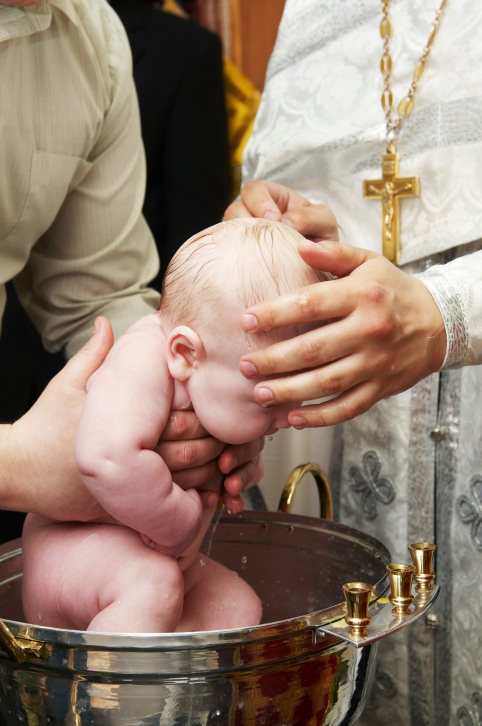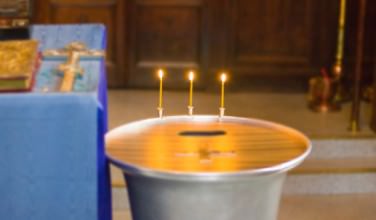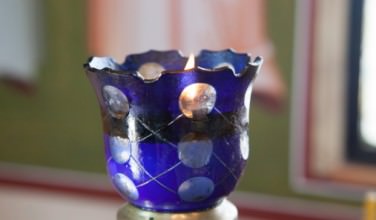Baptism vs. Chrismation
 What you need to know about Baptism and Chrismation in the Greek Orthodox Church
What you need to know about Baptism and Chrismation in the Greek Orthodox Church
We’ve probably all been to at least one Greek Baptism or Christening in our lives. However, much in a similar manner to a wedding, before we can go to the reception to celebrate, the service must be performed at the Church. But how much do we really know about the Baptism beyond it’s what you do to a newborn baby to become part of the Church? For starters many times the term Christening and Baptism are used interchangeably to explain the same thing. However, Baptism and Chrismation are two completely different things, and each is actually its own sacrament in the Orthodox Church.
The Baptism does in fact introduce us into the Greek Orthodox Church. A major part of this is the cleansing the soul of an infant of the original sin by Adam and Eve. This is done through the unmistakable part of the service where the baby is covered in oil and dipped in the water of the Baptismal font.
The godparent of the child is a crucial part of the infant’s baptism, as they speak on behalf of the child. Beginning in the back of the Church, the Godparent rejects Satan and recites the Nicene Creed as a profession of their belief in God. The Godparent uses the child’s Baptismal name for the first time as the Priest asks God to make them worthy of Baptism. Priest, Godparent[s] and the infant proceed to the front of the church where the Baptismal font is located. The Godparent coats the baby with oil, which with the priest’s prayers work to guard against evil.
In the most symbolic point of the service the priest dips the baby in the water three times, which symbolizes Jesus Christ’s birth, death and resurrection. The child is in effect reborn and resurrected in the name of Christ.
The Sacrament of Chrismation on the other hand is the confirmation of the infant into the Church, and it immediately follows the Baptism. In the Western churches confirmation occurs after a set period of time where the child can make a rational decision to be Christian. However in the Orthodox Church, confirmation occurs right after Baptism because the Holy Spirit, the the form of a dove, anointed Jesus Christ right after his Baptism in the River Jordan. This is why the Godparent is viewed as the sponsor of the child.
It is Chrismation where the priest anoints the child with special oil called Miron, which is blessed by the Ecumenical Patriarch in Constantinople. The baby is then dressed in white by relatives and then the priest, Godparents holding the infant, and a few children walk around the Baptismal font with a lit decorated Baptismal candle. The infant then receives their first communion with their Godparents who then hand the baptized and confirmed baby back to his or her parents.
Although both sacraments of Baptism and Chrismation happen together in the same service they serve two very different functions, and many times it commonplace for people to not recognize the distinction between the two.
Categorized in: Greek Christening Traditions
This post was written by Greek Boston
Share this Article:





